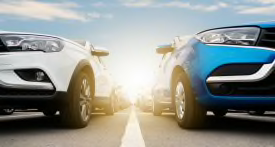This well-equipped, versatile EV seems ready to battle the Tesla Model 3 and Hyundai Ioniq 6
The Volkswagen ID.7 midsized electric sedan is the next model to use the company’s modular electric drive (MEB) platform. The ID.4 SUV was the first to use that EV platform in the U.S., and it will soon underpin the retro-flavored ID.Buzz minivan.
The ID.7 is sized like the Passat sedan, but being an EV with a long wheelbase, it promises to be even roomier than that spacious four-door. Plus, this latest electric car has a few tricks up its sleeve, such as a giant 15-inch center screen, a head-up display, an adjustable tint glass roof, adaptive suspension, and available massaging seats. And although it may not be readily apparent, it’s a hatchback.
The ID.7 is made in Germany, and it has been on sale in Europe since 2023. However, the launch in the U.S. has been delayed, likely until the 2025 calendar year.
Some details are a bit unclear, but here’s what we know so far.
It competes with the BMW i4, Genesis Electrified G80, Hyundai Ioniq 6, Mercedes-Benz EQE, Polestar 2, and Tesla Model 3.
At 195.3 inches bumper to bumper, the ID.7 is about the same length as the Passat sedan, which was retired after the 2022 model year. But it rides on a longer 116.8-inch wheelbase, about 7 inches longer thanks to the packaging conveniences of an electric vehicle. VW logically claims that moving the wheels to the ends of the car should enhance interior space. That should make it quite roomy.
















